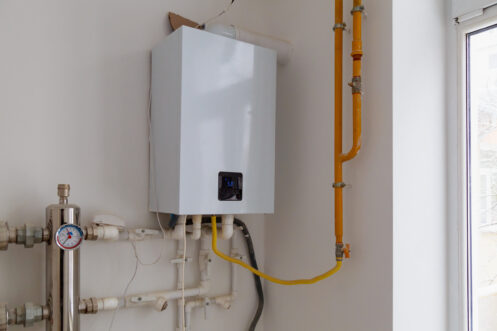The content further down involving How to Maintain Your Water Heater & Prolong its Life is quite insightful. You should investigate it.

Warm water is important for everyday convenience, whether it's for a refreshing shower or cleaning recipes. To ensure your warm water system runs efficiently and lasts much longer, regular maintenance is key. This post provides sensible tips and understandings on how to keep your home's hot water system to prevent disturbances and expensive fixings.
Introduction
Preserving your home's hot water system may seem difficult, yet with a few straightforward steps, you can guarantee it runs smoothly for several years to come. This overview covers everything from comprehending your warm water system to DIY maintenance pointers and knowing when to employ specialist assistance.
Relevance of Maintaining Your Hot Water System
Normal maintenance not only expands the lifespan of your warm water system yet also guarantees it runs efficiently. Ignoring upkeep can lead to reduced performance, higher energy expenses, and also premature failure of the system.
Indicators Your Warm Water System Needs Maintenance
Recognizing when your warm water system requires attention can avoid major problems. Watch out for indications such as irregular water temperature level, unusual noises from the heating unit, or rustic water.
Comprehending Your Hot Water System
Before diving into maintenance tasks, it's useful to comprehend the fundamental elements of your hot water system. Generally, this includes the water heater itself, pipes, anode rods, and temperature level controls.
Month-to-month Maintenance Tasks
Routine month-to-month checks can aid capture small issues before they escalate.
Flushing the Water Heater
Flushing your hot water heater eliminates debris build-up, boosting performance and lengthening its life.
Monitoring and Changing Anode Rods
Anode rods prevent corrosion inside the tank. Examining and replacing them when worn out is essential.
Examining and Changing Temperature Settings
Adjusting the temperature settings guarantees optimum efficiency and safety and security.
Do It Yourself Tips for Maintenance
You can perform numerous upkeep jobs on your own to maintain your hot water system in top condition.
Checking for Leaks
Regularly inspect pipelines and links for leakages, as these can cause water damage and higher bills.
Testing Stress Alleviation Valves
Checking the pressure relief valve ensures it operates appropriately and stops extreme pressure buildup.
Shielding Pipelines
Protecting hot water pipelines minimizes warm loss and can save energy.
When to Call a Specialist
While do it yourself maintenance is advantageous, some concerns require specialist competence.
Complex Concerns Requiring Specialist Help
Examples consist of major leakages, electrical troubles, or if your water heater is continually underperforming.
Routine Specialist Maintenance Conveniences
Professional upkeep can include complete evaluations, tune-ups, and making certain compliance with safety and security requirements.
Final thought
Regular maintenance of your home's warm water system is important for performance, longevity, and expense savings. By complying with these pointers and knowing when to look for professional assistance, you can ensure a trusted supply of hot water without unanticipated disruptions.
How to Maintain an Instant Hot Water Heater
Before tinkering with your hot water heater, make sure that it’s not powered on. You also have to turn off the main circuit breaker and shut off the main gas line to prevent accidents. Also turn off the water valves connected to your unit to prevent water from flowing into and out of the appliance. 2. When you’re done, you have to detach the purge valves’ caps. These look like the letter “T” and are situated on either side of the water valves. Doing so will release any pressure that has accumulated inside the valves while at the same time avoid hot water from shooting out and burning your skin. 3. When the purge valves’ caps are removed, you have to connect your hosing lines to the valves. Your unit should have come with three hoses but if it didn’t, you can purchase these things from any hardware or home repair shops. You can also get them from retail stores that sell water heating systems. Read the user’s manual and follow it to complete this task properly. When the hosing lines are connected, open the purge port’s valves. 4. You should never use harsh chemical cleaners or solutions when cleaning your unit. Make use of white vinegar instead. It should be undiluted and you’ll probably use about 2 gallons. 5. Now flush your water heater. This task should probably take about 40 minutes. We can’t give you specific directions for this because the procedure is carried out depending on the type, model and brand of your heater. With that being said, refer to the user’s manual. 6. When you’re done draining the unit, you have to turn off the purge port valves again. Remove the hosing lines that you earlier installed on each of the water valves. Put the valve caps (purge port) back in their respective places and be very careful so as not to damage the rubber discs that are found inside these caps. 7. Now that everything’s back in place, check your user’s manual again to find out how to reactivate your water heating system. 8. Once it is working, turn one of your hot water faucets on just to let air pass through the heater’s water supply pipes. Leave the tap on until water flows smoothly out of it. https://www.orrplumbing.com/blog/2014/september/how-to-maintain-an-instant-hot-water-heater/

I came across that entry about Tips on Maintaining a Water Heater when doing a lookup on the search engines. Liked our write up? Please share it. Help others check it out. I treasure reading our article about How to Maintain Your Water Heater & Prolong its Life.
Schedule Today